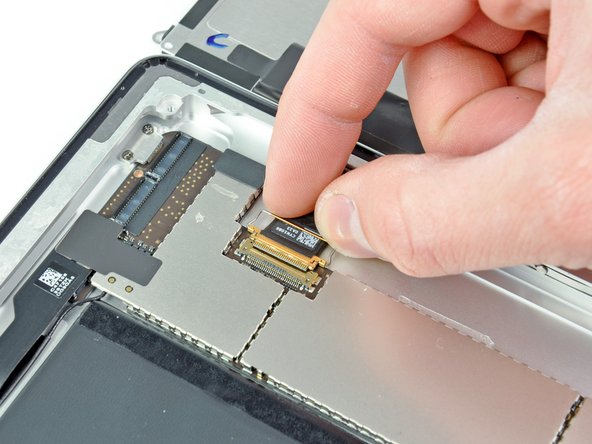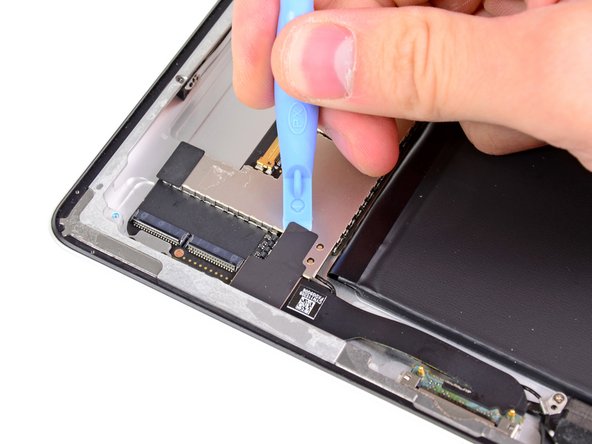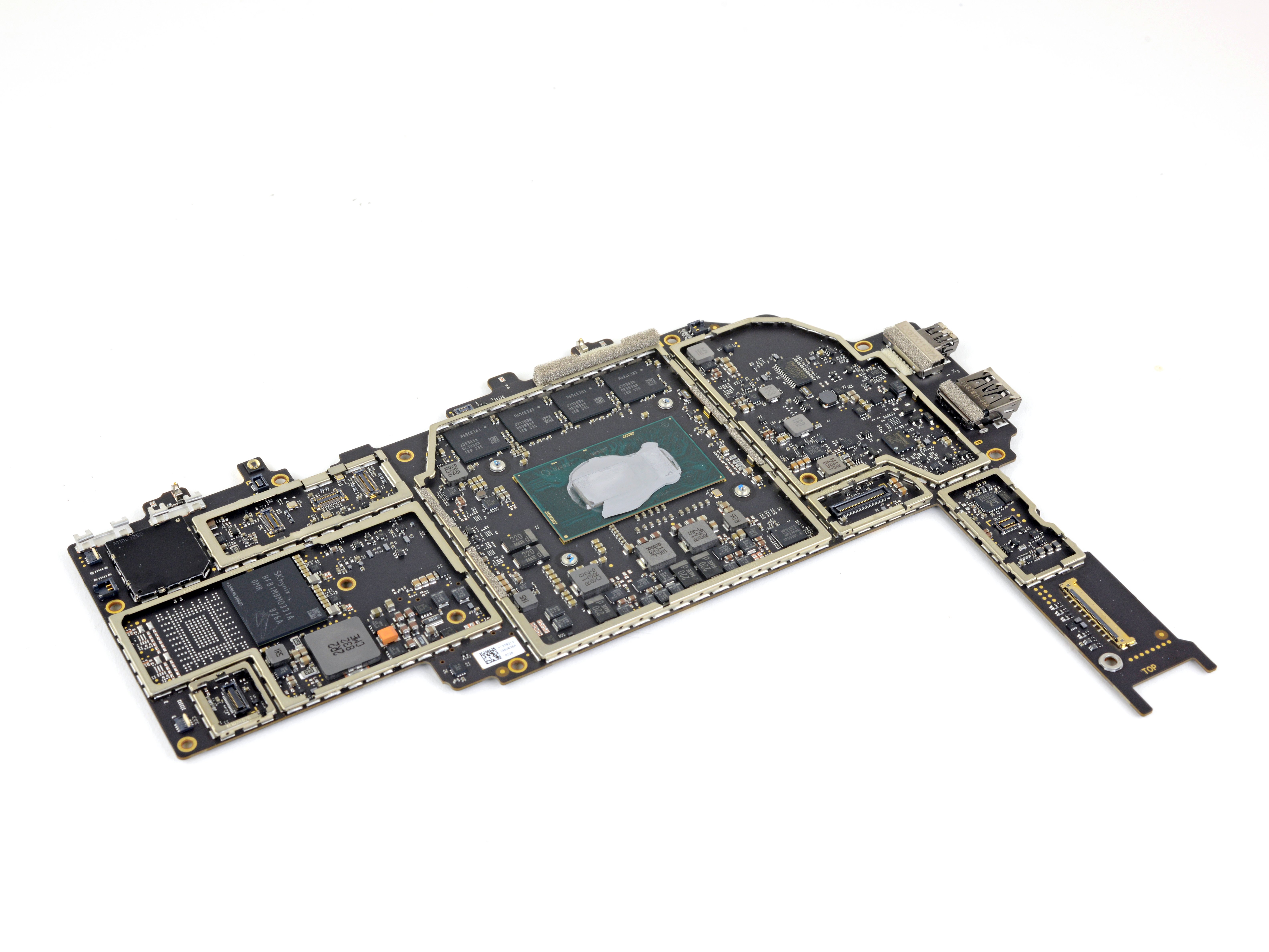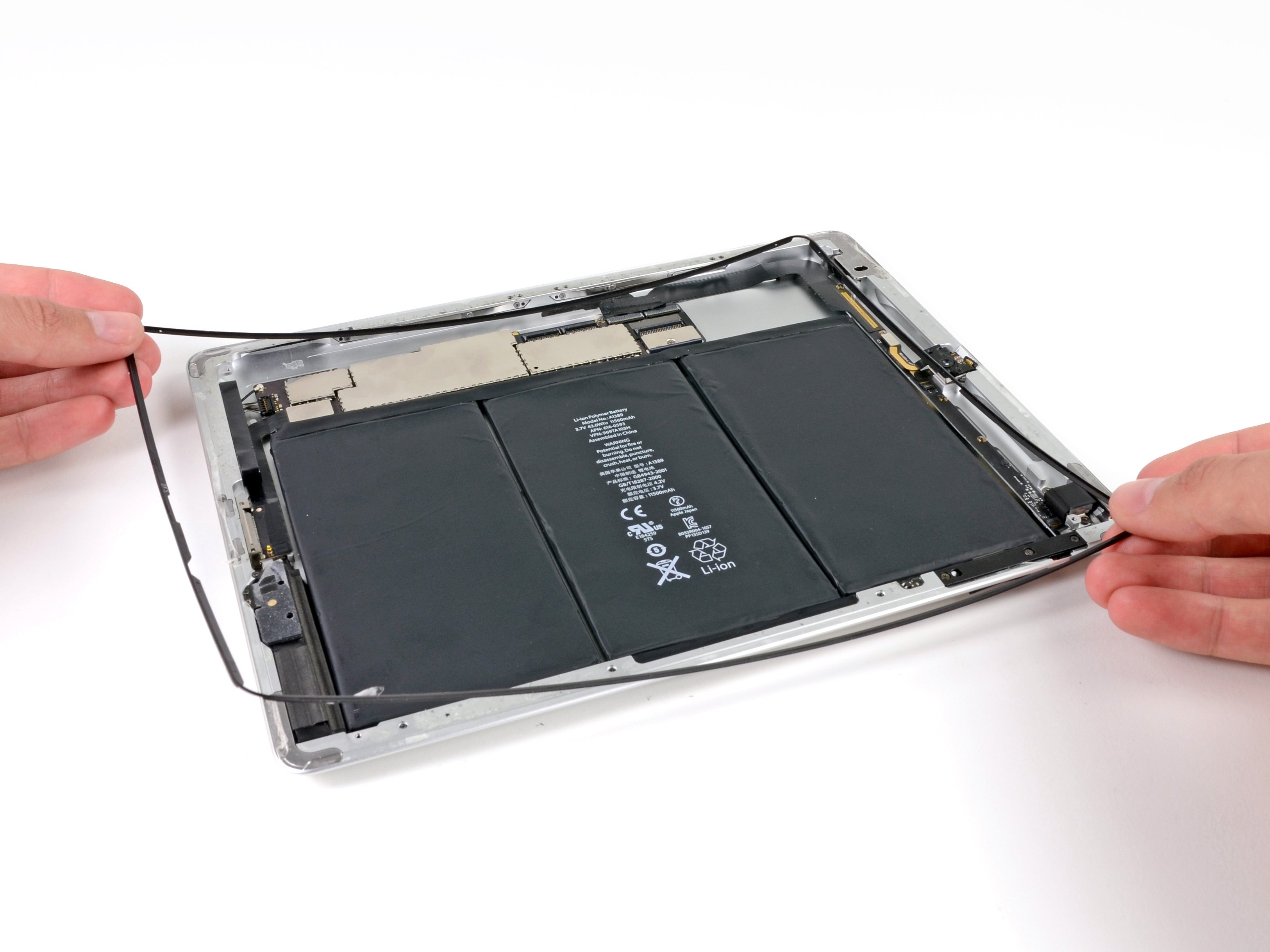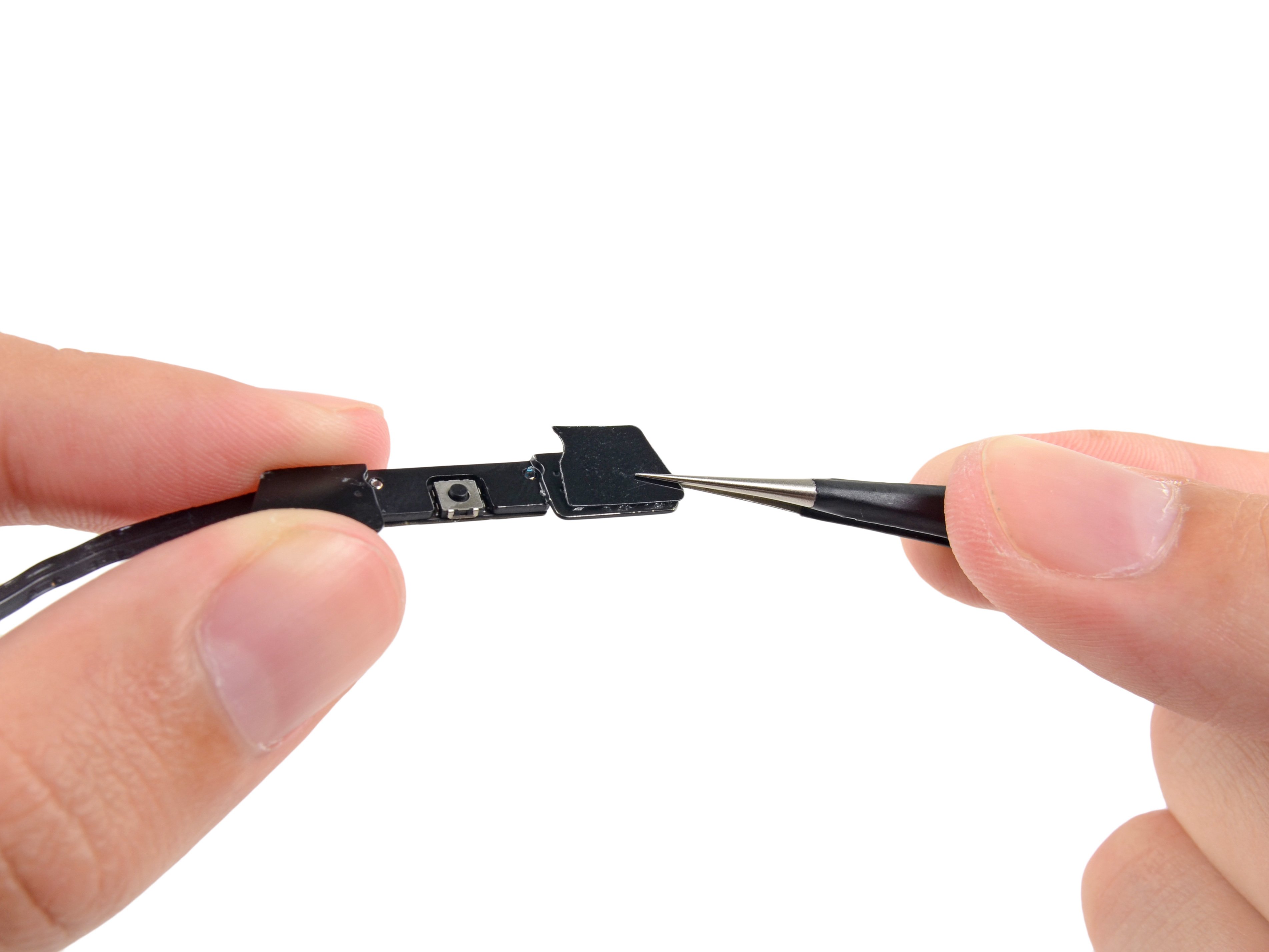DIY iPad 2 Logic Board Replacement Guide
Duration: 45 minutes
Steps: 46 Steps
Hey there! Before you dive into this repair, just a friendly heads-up: make sure you have a cozy workspace and all your tools at hand. It’ll make the process smoother and way more enjoyable. If you need help, you can always schedule a repair. Now, let’s get this gadget back in action!
Ready to give your device a fresh start? Follow this guide to swap out that pesky damaged logic board with ease and confidence! And remember, if you need help, you can always schedule a repair.
Step 1
It’s a great idea to give your microwave a little TLC before diving in, as any sticky residue on the bottom could hitch a ride on the iOpener.
– Pop the iOpener right in the middle of the microwave. It’s time to get that warmth going!
Tools Used
Step 2
Hey there! Just a quick heads up: be careful not to overheat the iOpener while you work your magic. Overheating can cause it to pop, and we definitely don’t want that! Keep it under 100˚C (212˚F) for safety.
If the iOpener looks like it’s puffing up, steer clear! Safety first!
Still feel like the middle of the iOpener is too hot to handle? No worries, just keep using it while it cools down a bit more before you reheat it. A well-heated iOpener should stay cozy for about 10 minutes.
– Give your iOpener a quick thirty-second spa treatment in the microwave.
– As you work through the repair, keep the iOpener cozy by giving it another thirty seconds in the microwave whenever it starts to chill out.
Tools Used
Step 3
The iOpener can get pretty toasty, so handle it with care! An oven mitt might just be your best friend here.
– Carefully take the iOpener out of the microwave, grabbing it by one of the flat ends to steer clear of that toasty center. You’ve got this!
Tools Used
Step 4
If you’re not rocking a microwave, no worries! Just pop that iOpener into some boiling water to warm it up.
– Grab a pot or pan and fill it with enough water to give your iOpener a nice warm bath.
– Heat that water up until it’s boiling, then turn off the heat. Safety first, folks!
– Now, gently place your iOpener in the hot water for about 2-3 minutes. Make sure it’s completely submerged for the best results.
– Using tongs (because we want to avoid any hot water splashes), carefully take out the heated iOpener.
– Give your iOpener a good towel dry to ensure it’s nice and ready.
– Voila! Your iOpener is all set for action! If it needs a reheat, just repeat the process: boil the water, turn off the heat, and let it soak for another 2-3 minutes.
Tools Used
Step 5
Don your safety glasses to keep those peepers safe, and watch out for that LCD screen—it’s more fragile than it looks!
– If your display glass is cracked, let’s keep it from turning into a confetti party and avoid any accidental injuries while you work your magic. Grab some tape and cover that glass up!
– Layer on some clear packing tape over the iPad’s display like you’re creating a protective shield until the whole face is nice and snug.
– Now, just do your best to follow along with the rest of the guide. Keep in mind that once the glass is broken, it may decide to keep cracking, so you might need to use a metal prying tool to gently scoop out the pieces.
Step 6
Just a heads up! While you’re getting your hands dirty with this repair, keep those peepers safe by rocking a pair of safety glasses. Trust us, it’s better to dodge those pesky flying glass shards!
– Place the iOpener flat against the right edge of the iPad, making sure it’s nice and snug for solid contact. We want that warmth to work its magic!
– Give it about 90 seconds to work its wonders before you dive into opening the front panel. Patience is key, my friend!
Tools Used
Step 7
Getting that little wedged tip of the opening tool between the glass and plastic might take a bit of elbow grease. Just take your time and be gentle, giving the plastic opening tool a little wiggle here and there as needed. You’ve got this!
– Hey there! Check out that tiny gap in the adhesive ring at the upper right corner of your iPad—it’s about 2.0 inches (~5 cm) from the top. Looks like a perfect little spot to start our adventure!
– Now, grab your tool and line it up with the mute button. Carefully slide the tip of your plastic opening tool into that gap between the front glass and the plastic bezel. Just nudge it in a bit to help widen the crack. You’ve got this!
Step 9
– With the plastic opening tool snugly positioned between the front glass and the plastic bezel, gently slide a plastic opening pick into that sweet spot right beside the tool. You’re doing great!
Step 10
– Gently take out the plastic opening tool from your iPad and slide the opening pick a little deeper under the front glass—about half an inch should do the trick!
Step 12
The adhesive is super strong, so you might need to put in some muscle. Just take your time and be careful!
If you spot the tip of the opening pick peeking out from under the front glass, give it a gentle tug. While diving this deep with the pick won’t cause any harm, it might leave a bit of adhesive residue on the LCD. Just a heads up!
– As the iOpener warms up the bottom edge, start peeling away the adhesive on the right edge of your iPad.
– Gently slide the opening pick down the side of the iPad, letting it do its magic and release the adhesive along the way.
Tools Used
Step 13
As you work on releasing the adhesive, keep an eye on the heated iOpener. You might need to slide it back over to the right edge of the iPad, especially if it has had a little time to cool down while you were busy. Just a friendly reminder to stay on your toes!
– If your trusty opening pick is feeling a bit clingy in the adhesive, just give it a little ‘roll’ along the edge of the iPad. Keep it moving to help free that sticky stuff!
Tools Used
Step 14
– Before you pop that first opening pick from the bottom corner of your iPad, slide a second pick under the right edge of the front glass. This little buddy will help keep the adhesive from sticking back down.
– Give your iOpener another warm-up and place it on the top edge of the iPad to keep things cozy.
Tools Used
Step 15
Hey there! Just a heads up: the Wi-Fi antenna is snugly fastened to the bottom right corner of the iPad’s rear case with screws and a cable. Given its position, it’s super important to tread lightly to avoid any permanent damage to the antenna. Let’s keep it safe and sound!
– Alright, friends, it’s time to tread lightly on this next part! We’re about to tackle the adhesive that’s keeping the antenna snug against the front panel, and we want to make sure we don’t harm those sensitive connections down at the bottom of the iPad. So, let’s follow these steps with care and confidence!
Step 16
Hey there! Just a friendly reminder: keep that pick from sliding too far down into the bottom right corner. You wouldn’t want to accidentally mess with the Wi-Fi antenna, right?
– Gently slide the opening pick around the bottom right corner of your iPad to free up that pesky adhesive!
Step 17
Take a moment to gently glide that opening pick along the bottom right edge of the front panel. Just a heads up, the Wi-Fi antenna is cozying up to the corner, so be careful not to disturb it too much while you’re working. A little mishap here could lead to some unwanted disconnects.
Just give that pick a little wiggle! Don’t yank it out completely from under the front glass—leave about 1/8″ (3 mm) tucked away so it can keep working its magic.
– Gently glide the edge of your opening pick along the bottom of the iPad, letting it work its magic to break free the adhesive around the Wi-Fi antenna.
Step 18
– Alright, once you’ve gracefully glided past the Wi-Fi antenna (that’s about 3 inches or 75 mm from the right edge, right by the home button), pop that opening pick back in all the way.
– Now, gently slide the pick to the right to free the adhesive that’s holding the Wi-Fi antenna to the front glass. You’re doing great!
Step 19
Keep that iOpener cool, my friend! Heat it for no more than a minute at a time, and give it a breather of at least two minutes before you heat it up again. Safety first, and let’s keep things breezy!
If the adhesive has cooled down a bit too much along the bottom edge, give that iOpener a quick reheat to warm up the sticky stuff where you’re working. Keep it cozy!
– Keep working your way along the bottom of the iPad, gently easing out the adhesive. Slide that opening pick around the home button, and when you’ve made it past that little guy, pop it back in to a depth of about 1/2 inch (10 mm). You’ve got this!
Tools Used
Step 20
– Keep peeling away that sticky stuff along the bottom edge of the iPad until it’s all gone. You’re doing great!
– Once you’ve got that covered, just leave the opening pick snugly in place under the front glass near the home button. You’re almost there!
Step 22
If your adhesive has decided to chill out a bit too much, just pop the iOpener back along the top edge and keep going. And if the iOpener itself has cooled down, give it a little reheat to keep the good times rolling!
– Gently glide that opening pick along the top edge of your iPad, giving it a little tug to navigate around the front-facing camera bracket.
– Keep in mind, the adhesive in this area is pretty strong, so you might need to apply a bit of elbow grease. Take your time and be careful—no need for any accidents with yourself or your iPad!
– If your opening pick feels like it’s stuck in the adhesive, try ‘rolling’ it as demonstrated in step 9.
Tools Used
Step 23
If the adhesive is feeling nice and warm, go ahead and take the iOpener off the iPad for a bit of ease. But if it’s still holding on tight, give that iOpener a quick reheat and pop it back on the left edge while you tackle the task at hand.
– Keep peeling back that sticky stuff along the top edge of your iPad, and gently glide the opening pick around the top left corner like a pro.
Tools Used
Step 24
The digitizer cable is hanging out about 2″ (50 mm) from the bottom of your iPad. Just pause the pick when you reach around 2.25″ (60 mm) from the bottom. You’ve got this!
– Gently glide the opening pick down the left edge of your iPad, letting the adhesive give way as you go. The adhesive here is a bit on the thin side thanks to the digitizer running along that whole left side. Just a quick tip: keep the pick no deeper than about half an inch (10 mm) to avoid any accidental digitizer damage. You’ve got this!
Step 25
Be extra careful here! The bottom of the digitizer cable is just about 1″ (25 mm) from the iPad’s bottom. Take your time and work gently—let’s keep that cable intact!
– With the trusty opening pick still nestled under the bottom edge of your iPad, gently pry to free the adhesive at the bottom left corner.
Step 26
– Take one of those handy opening picks and gently lift up the bottom right corner of your iPad. Once it’s popped up, give it a little pinch with your fingers to hold on tight!
Step 27
Watch out for any leftover sticky stuff that might still be clinging on, and grab an opening pick to slice through any adhesive that’s still holding the front panel down.
– Grab your iPad by the top and bottom right corners, and gently swing that front glass away from the device like you’re unveiling a surprise!
– As you put everything back together, don’t forget to give that LCD a little TLC with a microfiber cloth and a blast of compressed air to wipe away any sneaky dust bunnies or pesky fingerprints before sealing it up.
Step 28
– Carefully take out the four 2.0 mm Phillips screws that are holding the LCD in place against the rear case. You’ve got this!
Step 29
The ribbon cables for the front panel are tucked away beneath the LCD. To get to them, just flip the LCD over for a moment and set it aside. Easy peasy!
– Gently lift the LCD from the edge closest to the volume buttons and flip it out of the rear case, just like you’re turning the page of your favorite book.
– Now, carefully place the LCD face down on the front panel. You’ve got this!
Step 30
Make sure you’re gently lifting the hinged retaining flaps and not the sockets themselves. You’ve got this!
Check out the second picture to spot those retaining flaps—they’re marked in red for your convenience!
– Gently use the edge of a plastic opening tool to lift up the retaining flaps on those two digitizer ribbon cable ZIF sockets. You’re doing great!
Step 31
– Grab your trusty plastic opening tool and gently coax the digitizer cable away from the shields on the logic board. It’s like peeling a sticker off, but with a bit more finesse!
– Now, with a delicate touch, carefully lift the digitizer cable from the adhesive that’s keeping it snug against the side of the rear case. Just think of it as giving your device a gentle hug goodbye!
Step 32
– Gently wiggle and pull the digitizer ribbon cable straight out of its two cozy sockets on the logic board. You’re doing great!
Step 33
To get that front panel assembly off, you’ll want to slide the ribbon cable out from between the case and the LCD. Just give the LCD a gentle nudge to create a bit of space, and you’re good to go!
– Gently lift the LCD from the edge that’s farthest from the digitizer cable, and flip it back toward the rear case—imagine you’re closing a book with a little flair!
– While keeping the LCD elevated, carefully slide the front panel away from the iPad. Just watch out for that digitizer cable—it’s a little shy and doesn’t want to get caught on the rear case or the LCD.
Step 34
To dive into the iPad’s inner workings, let’s carefully flip the LCD back out of its cozy case.
– Gently lift the LCD from the edge nearest the volume buttons and flip it out of the rear case, just like you’re turning the page of your favorite book.
– Carefully place the LCD face down on a clean surface. A soft cloth underneath will keep it safe from scratches and ready for action.
Step 35
Be sure to gently wiggle the connector free from its socket instead of yanking it up. We want to keep everything intact and happy!
– Grab a trusty plastic opening tool and gently nudge that display data cable lock upwards. You’ve got this!
– Now, with a little finesse, pull that display data cable right out of its cozy socket.
Step 36
– Gently detach the LCD assembly from the back panel assembly. Remember, slow and steady wins the race!
Step 37
– If there’s a pesky piece of tape blocking the way, grab a plastic opening tool and gently coax it off the dock connector cable’s end.
– Next, with the edge of your trusty plastic opening tool, carefully lift the dock connector cable’s connector from its cozy home on the logic board.
– Now, it’s time to peel the dock connector ribbon cable away from the rear panel. You’ve got this!
Step 38
Take care to gently pry just the connector, avoiding the socket on the logic board, or you might end up giving that socket a little too much love and breaking it.
– Gently lift the speaker cable connector straight up from its cozy spot on the logic board.
Step 39
Make sure you’re gently prying up on the hinged retaining flap, not the socket itself. You’ve got this!
– Grab your trusty plastic opening tool and gently lift the retaining flap on the headphone jack and front camera cable ZIF socket. You’ve got this!
– Carefully peel away the headphone jack and front camera cable from the rear case. You’re making great progress!
Step 40
– Gently wiggle the headphone jack and front camera ribbon cable out of its cozy home on the logic board. You’ve got this!
Step 41
Be careful not to pull the cable straight up as you disconnect it!
– Grab your trusty plastic opening tool and gently lift the retainer that holds the control board cable connector snugly in place on the logic board.
– Carefully pull the connector away from its cozy socket on the logic board.
Step 42
– Unscrew the two 2.1 mm Phillips screws that are holding the logic board bracket snugly to the rear case, right by the digitizer cable socket. You’ve got this!
– Gently lift the logic board bracket away from the rear case. You’re making progress!
Step 43
– Say goodbye to those last three 2.6 mm Phillips screws holding the logic board tight to the rear case. Time to set them free!
Step 44
– Gently slide the edge of a plastic opening tool under the logic board and give it a little lift to free it from the adhesive that’s keeping it snug against the rear case. You’ve got this!
Step 45
Hold your horses! Don’t go yanking it out just yet—there’s still an antenna cable hanging on for dear life.
– Gently lift the logic board out of the rear case and give it a slight tilt toward the battery, just like you’re helping it stretch after a long day!
Step 46
– Gently slide the edge of a plastic opening tool under the Wi-Fi antenna connector and give it a little lift to pop it out of its cozy home on the logic board.
– Now, it’s time to say goodbye to the logic board and carefully take it out of the iPad 2.


































































